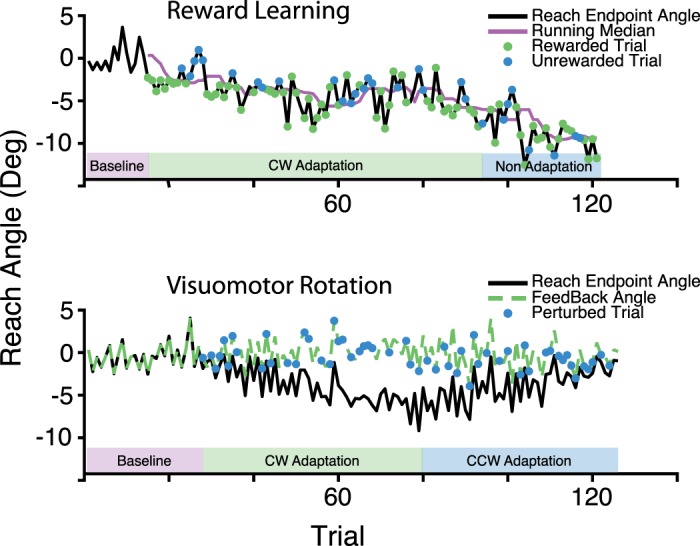Fig. 2.

Reach angles of a representative participant (n = 1). Top: the reward learning block assigned to the clockwise (CW) adaptation with the high-reward frequency condition. Reaches were rewarded with 100.0% probability for reach angles less than the median of the previous 10 reaches and with 30.0% probability for reach angles greater than this running median. Reward was delivered at a fixed probability of 65.0% when the running median was less than −6°, indicated by the “Non-Adaptation” portion of the block. Bottom: the visuomotor rotation block assigned to the 1.5° rotation condition. The rotation is imposed randomly in 50% of trials. The rotation is initially counterclockwise (CCW) but reverses when the mean of the previous 5 reach angles becomes less than −6.0°.
